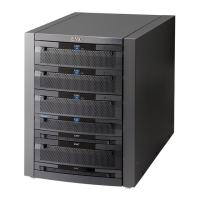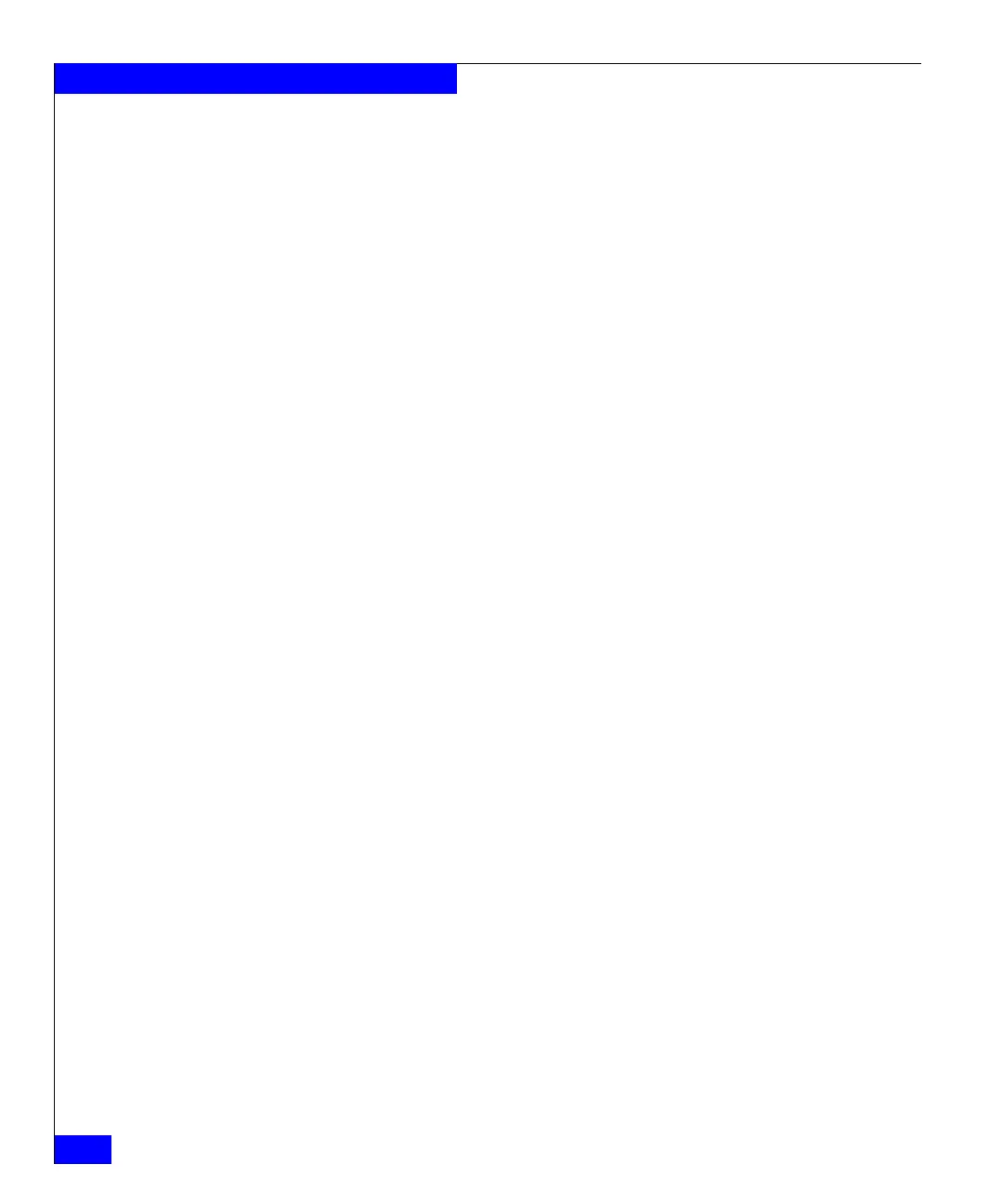176
Celerra Network Server Command Reference Manual
The nas Commands
When the symm_std, symm_std_rdf_src, symm_ata, and
symm_ata_rdf_src pools are specified, the default is not to slice
the volumes, which is overridden with slice=y.
When the clar_r1, clar_r5_performance, clar_r5_economy,
clarata_r3, clarata_archive, cm_r1, cm_r5_performance,
cm_r5_economy, cmata_r3, and cmata_archive pools are
specified, the default is to slice the volumes, which is overridden
with slice=n. Refer to to change the default slice option.
[-name <name>] -type nmfs -create
Creates a nested mount file system (NMFS) that can be used to
combine multiple uxfs file systems into a single virtual file system.
The NMFS can then be mounted and exported as a single share or
mount point.
SEE ALSO Managing Celerra Volumes and File Systems with Automatic Volume
Management, Managing Celerra Volumes and File Systems Manually,
Controlling Access to Celerra System Objects, Using File-Level Retention
on Celerra, Using TimeFinder/FS, Near Copy, and Far Copy with Celerra,
and Using Celerra Replicator, fs_ckpt, fs_timefinder, nas_acl, nas_rdf,
nas_volume, server_export, server_mount, server_mountpoint.
BACKEND OUTPUT The number associated with the storage device is dependent on the
attached backend of the system. CLARiiON backends display a
prefix of APM before a set of integers, for example,
APM00033900124-0019. Symmetrix backends display as
002804000190-003C. The outputs displayed in the examples use a
CLARiiON backend.
Celerra Network Servers with a CLARiiON backend support the
following system-defined storage pools: clar_r1,
clar_r5_performance, clar_r5_economy, clarata_r3, clarata_archive,
cm_r1, cm_r5_performance,
cm_r5_economy, cmata_r3, and
cmata_archive.
Disk types when using CLARiiON are: CLSTD and CLATA, and for
CLARiiON backends involving mirrored disks: CMSTD, and
CMATA.
Celerra Network Servers with a Symmetrix backend support the
following system-defined storage pools: symm_std,
symm_std_rdf_src, symm_ata, symm_ata_rdf_src.
For user-defined storage pools, the difference in output is in the disk
type. Disk types when using a Symmetrix are: STD, R1STD, R2STD,

